Art Basel in Basel 13 Jun -16 Jun 24
Every year in June, the Basel event draws an impressive array of talent and enthusiasts to the art world’s premier gathering. This year, under the leadership of new show director Maike Cruse, the fair attracted over 91,000 visitors.
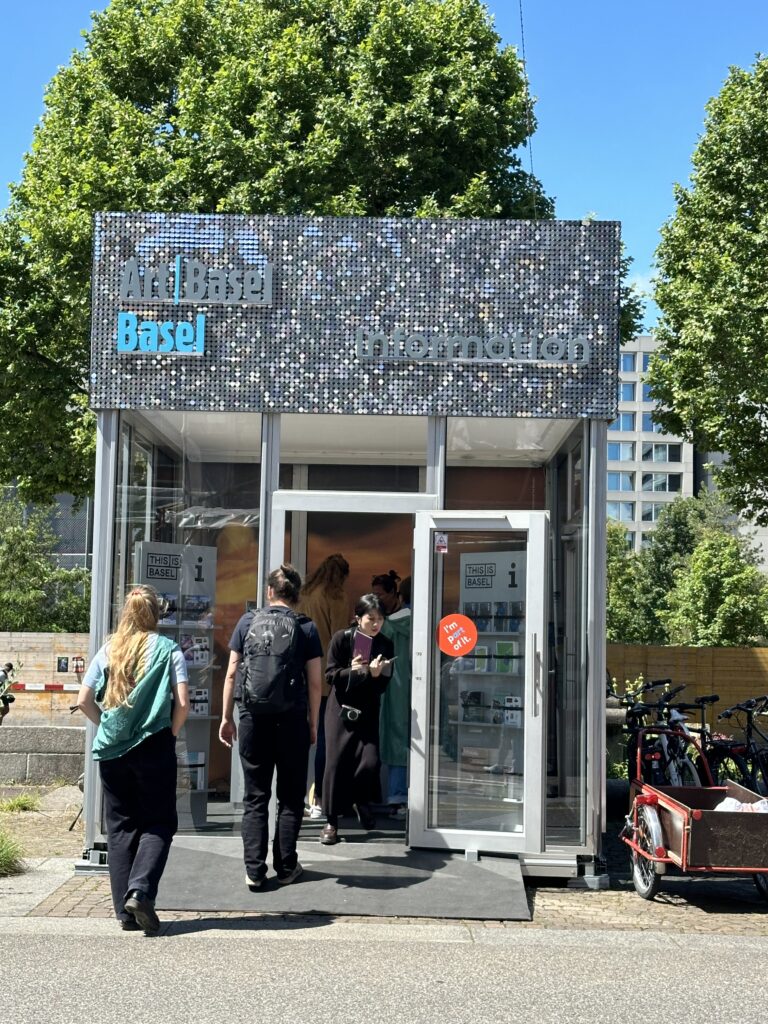
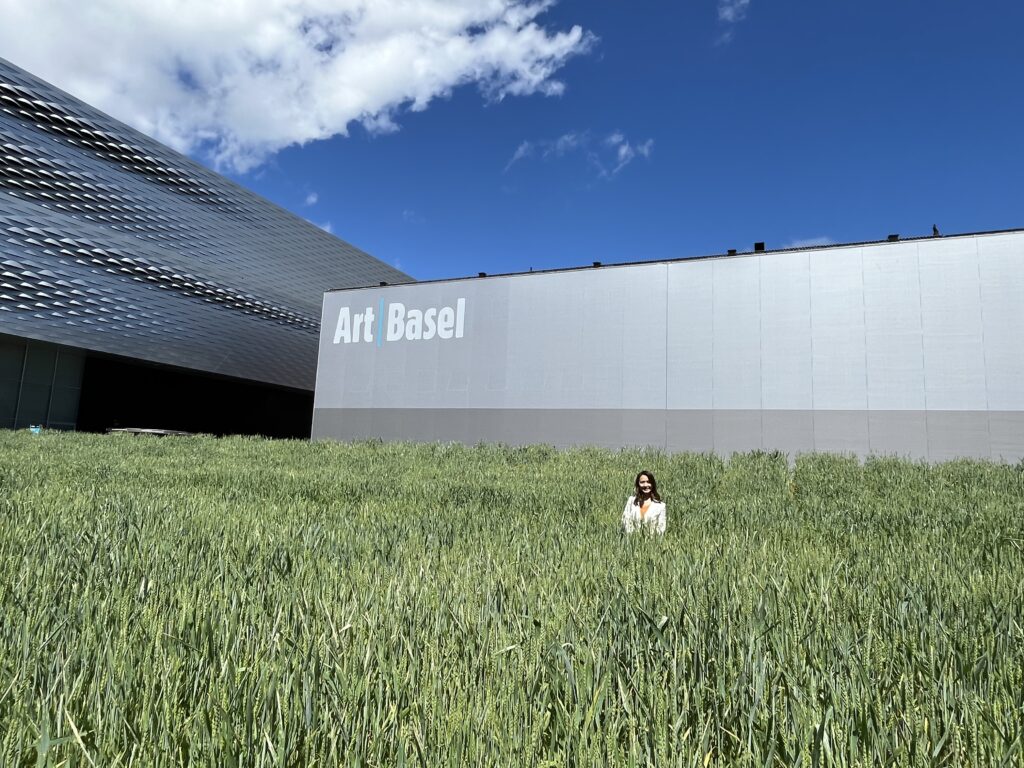
The Messeplatz featured Agnes Denes’ Honoring Wheatfied -A Confrontation (2024) (photo private)
Four decades after her groundbreaking installation in Lower Manhattan, American conceptual artist Agnes Denes has brought her iconic Wheatfield to Art Basel this year.
Walking the path that cuts through the field, visitors are immersed in a multisensory experience. The soft rustle of wheat and earthy scent offer a moment of tranquility amidst the bustling fair.
This juxtaposition forces viewers to confront the often-overlooked connections between urban life, food production, and ecological balance.
It’s a timely reminder of art’s power to challenge our perceptions and inspire change.
The work will stay on view throughout the summer until its harvest. This living installation serves as both a poetic gesture and a call to action.
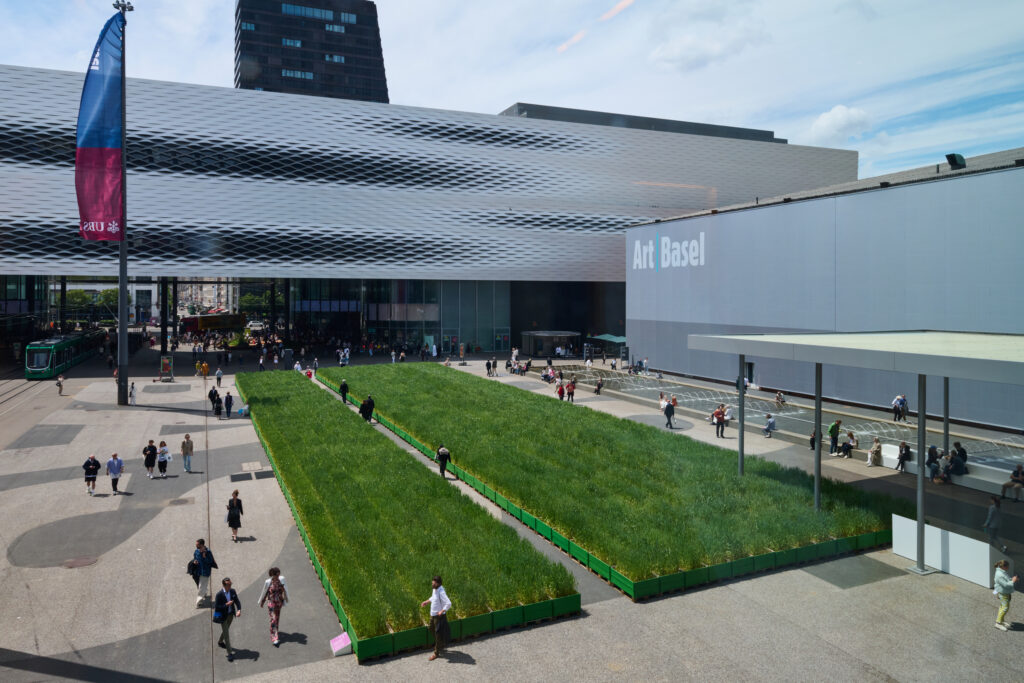
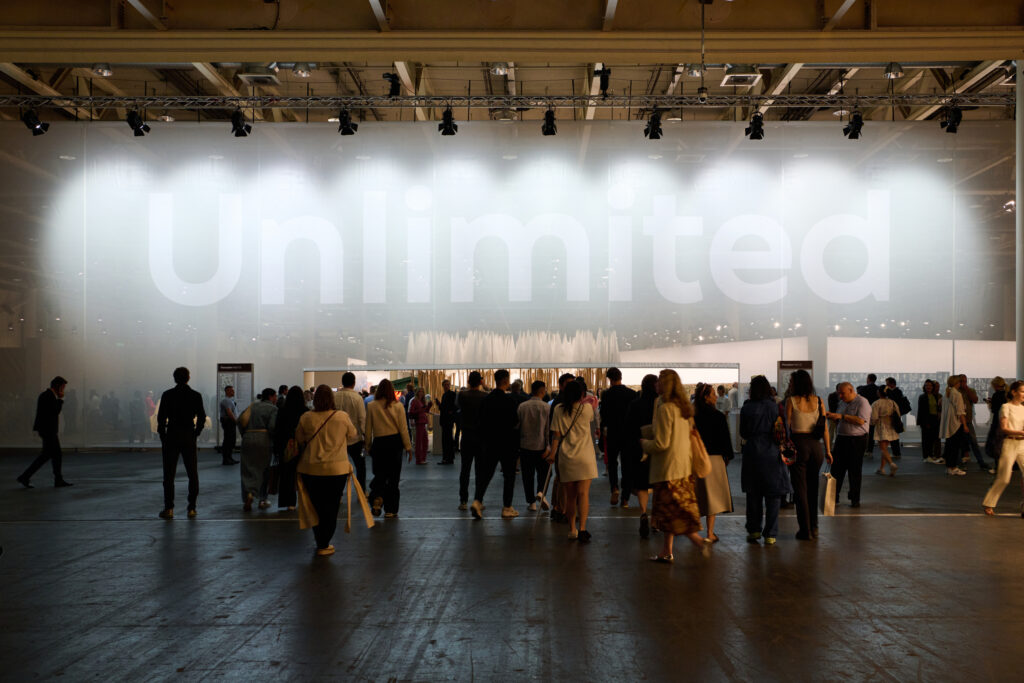
Staged in a 16,000-square-meter hall, the Unlimited sector of Art Basel in Basel, curated by Giovanni Carmine, featured artworks of monumental scales.
Among the most captivating works at Art Basel this year is Chiharu Shiota’s monumental installation The Extended Line (2023-2024), presented by Templon gallery.
The free-standing 16 x 9 meter installation consists of hundred kilometres of red ropes hanging above the artists open hands and arms from which white papers seem to be flying out.
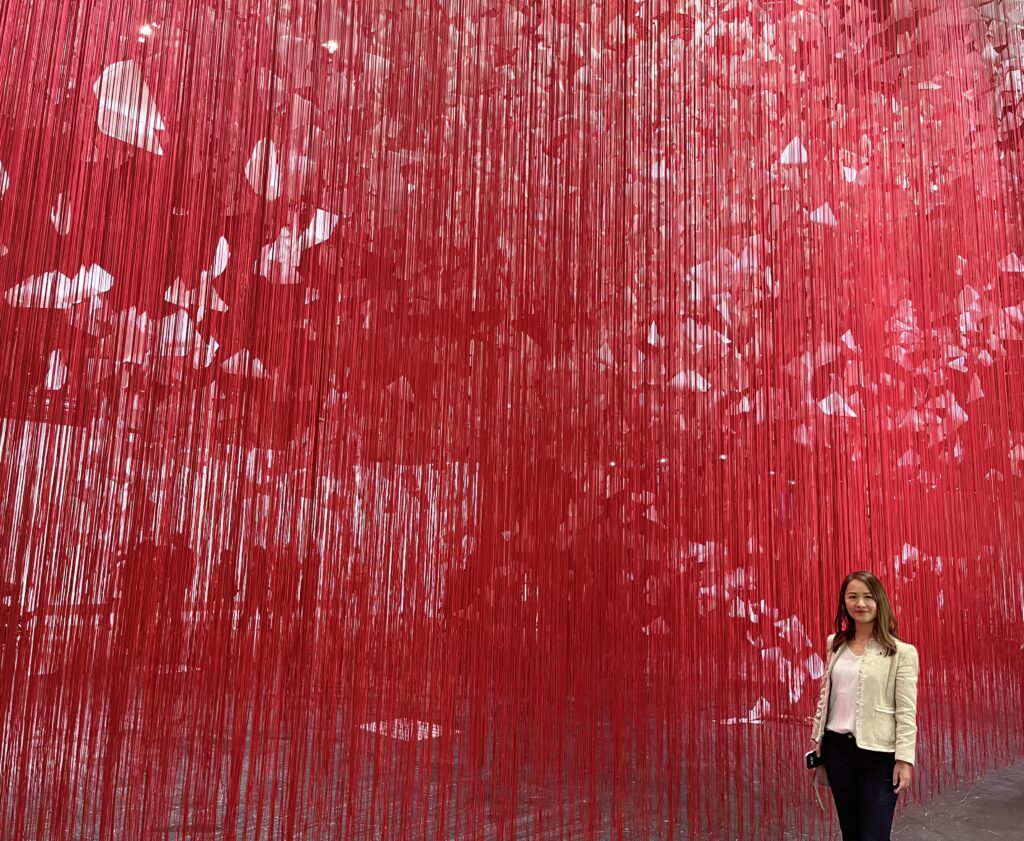

Known for her exploration of “presence in absence,” Shiota infuses this work with deeply personal significance. As a cancer survivor, the artist channels her experiences of vulnerability, resilience, and rebirth into this powerful piece.
Standing before The Extended Line, viewers are enveloped in a space that feels both vast and intimate.
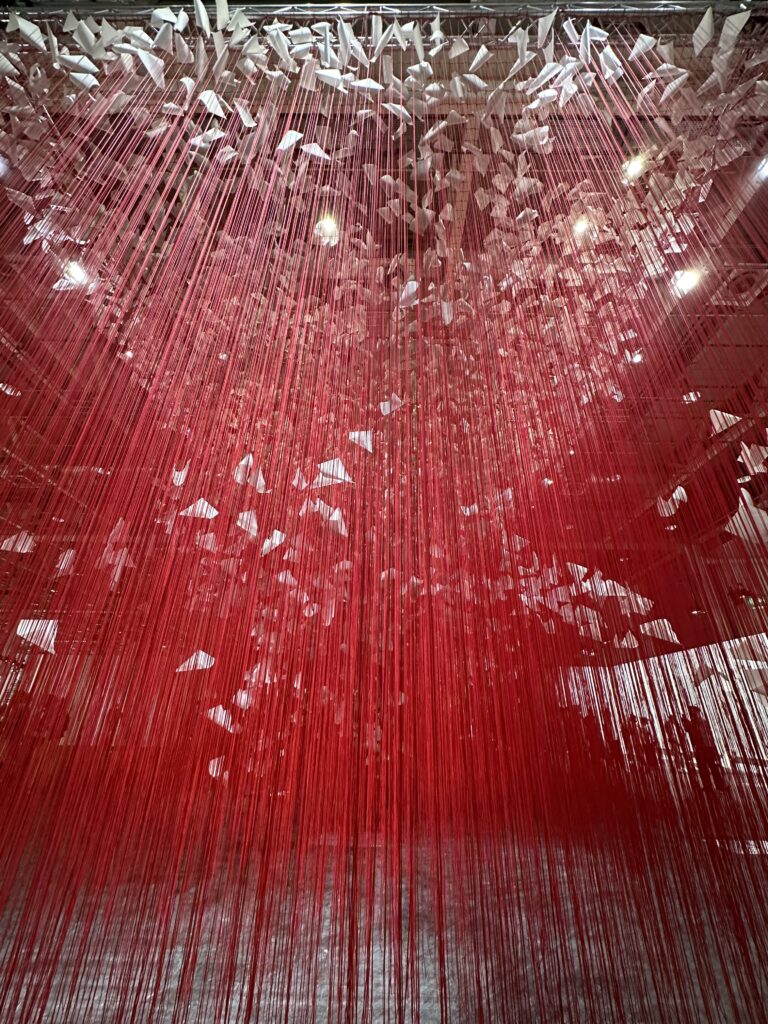
Chiharu Shiota The Extended Line (2023-2024) (photo private)
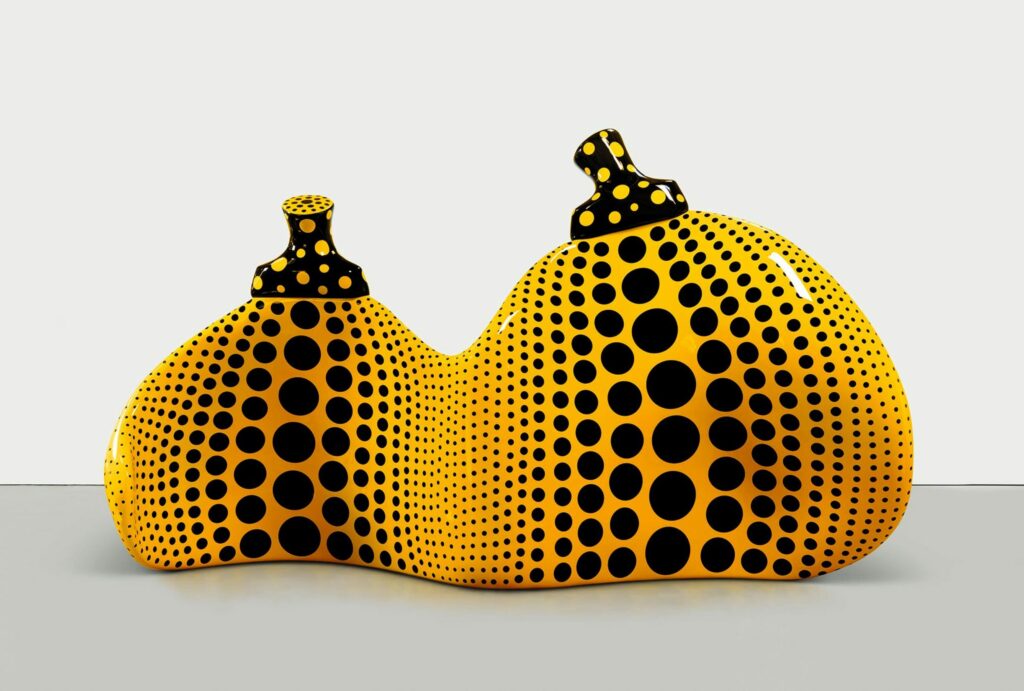
Yayoi Kusama, Aspiring to Pumpkin’s Love, the Love in my Heart (2023) presented by David Zwirner gallery.
Yayoi Kusama’s colossal sculpture depicts two interconnected bronze pumpkins with undulating surfaces, adorned with Kusama’s signature polka dots. The artist has used pumpkins to represent themes of infinity, fertility, and the sublime.
Kusama’s fascination with pumpkins stretches back to her childhood in Japan, when she went to pick it, it supposedly began speaking to her. Ever since, ‘pumpkins have been a great comfort to me,’ the artist has said.
Kusama has been open about her struggles with mental health, including hallucinations and obsessive-compulsive disorder. The repetitive and meditative process of creating her pumpkin-themed works serves as a therapeutic outlet for her.
The polka dots that often cover her pumpkins are a reflection of her hallucinatory visions, turning her internal experiences into external art.
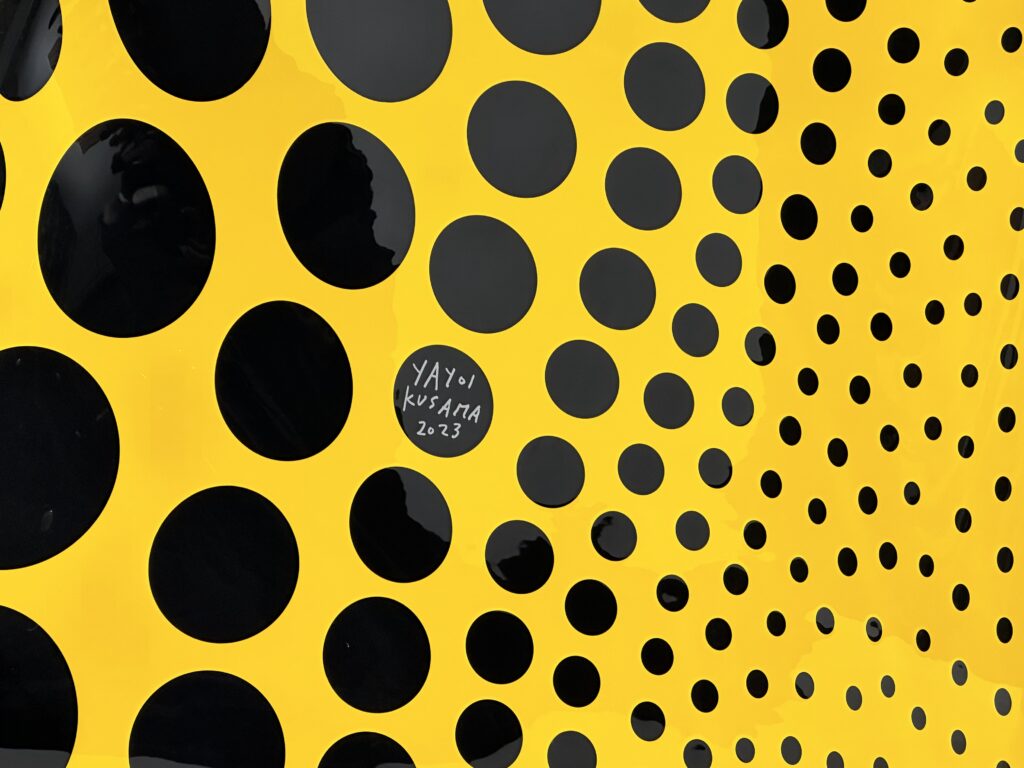
Yayoi Kusama, Aspiring to Pumpkin’s Love, the Love in my Heart (2023) (photo private)
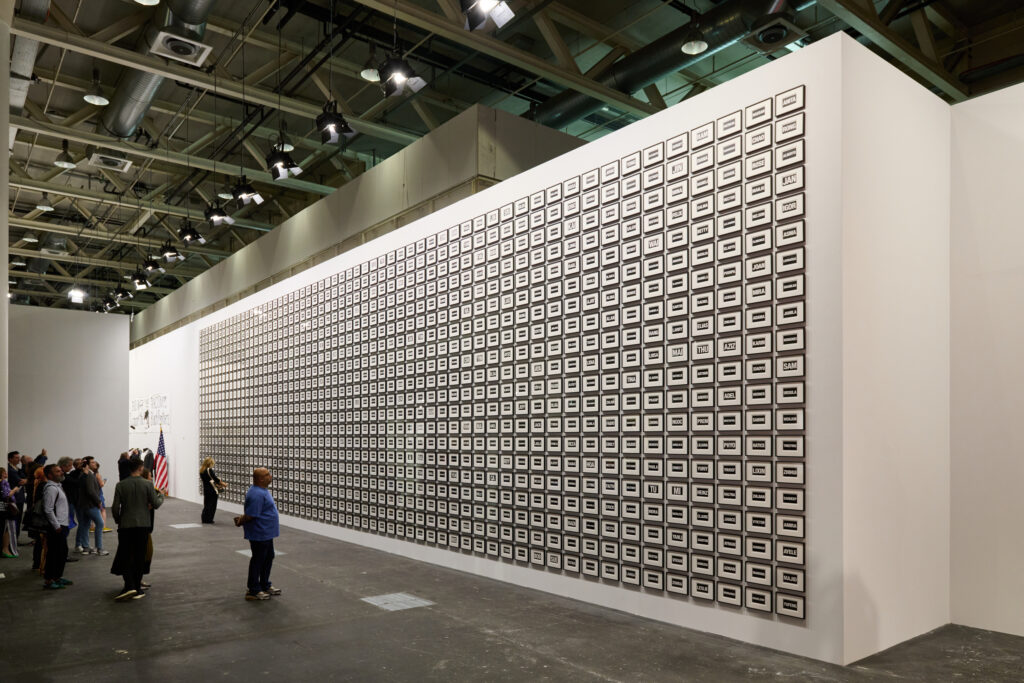
Allan McCollum The World: A Moment In Time (2024), presented by Thomas Schulte gallery (photo private)
This work comprises 1200 identically executed and framed black-and-white prints, each displaying one of the world’s most common names.
The emotional impact of encountering one’s own name within this sea of humanity is profound. As I stood before the wall and found my Chinese name ‘HAIYAN’ among thousands, I experienced a moment of personal connection that was both surprising and deeply moving. It’s a testament to McCollum’s artistry that he can spark such an intense, individual reaction with the simplest of means.
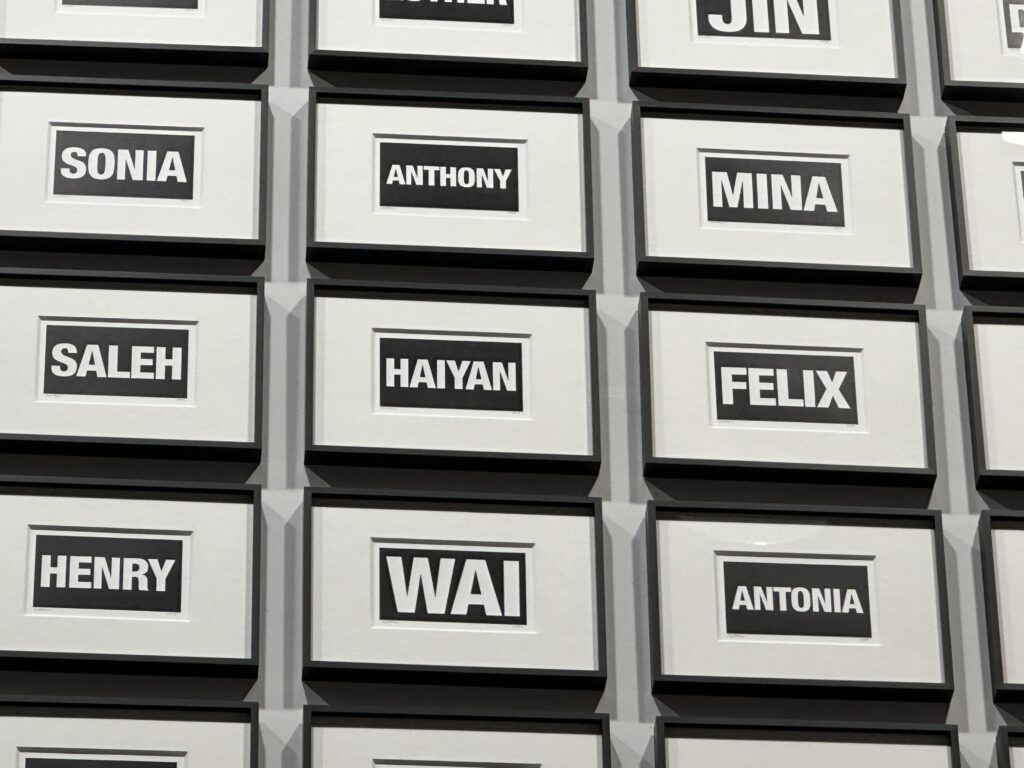
It is an excellent example of the main focus of McCollum’s oeuvre on the whole, which oscillates from individual to universal, specific to general, part to whole. This installation reminds us of the power inherent in naming and the complex web of emotions and identities names represent.
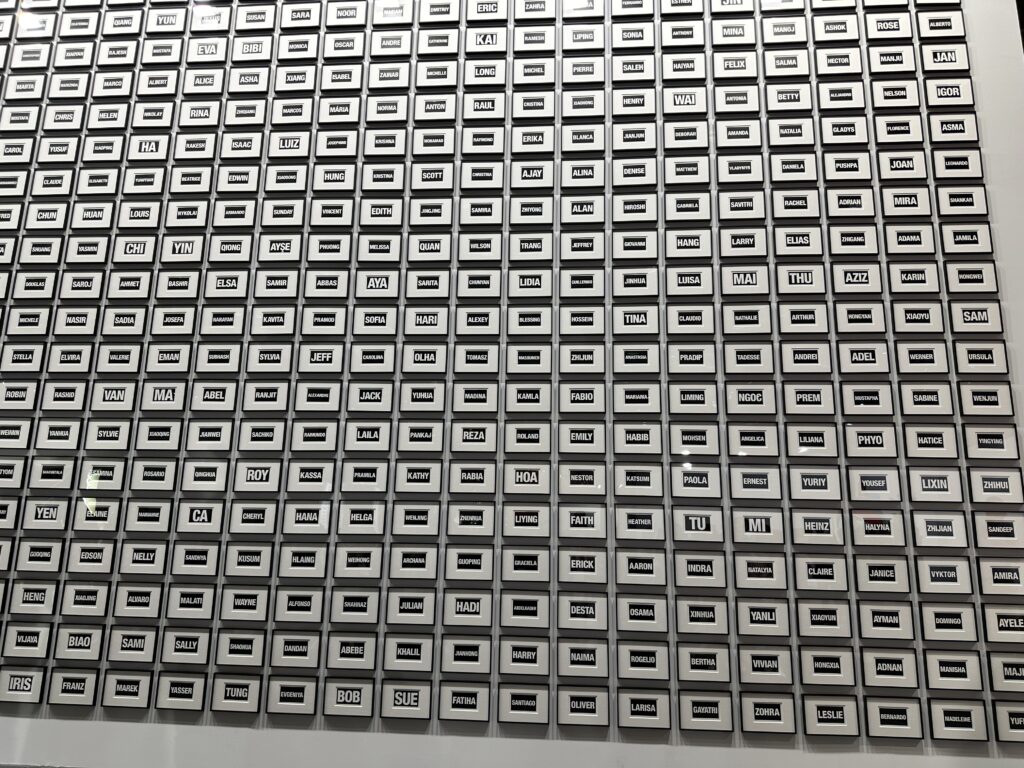
Allan McCollum The World: A Moment In Time (2024) (photo private)
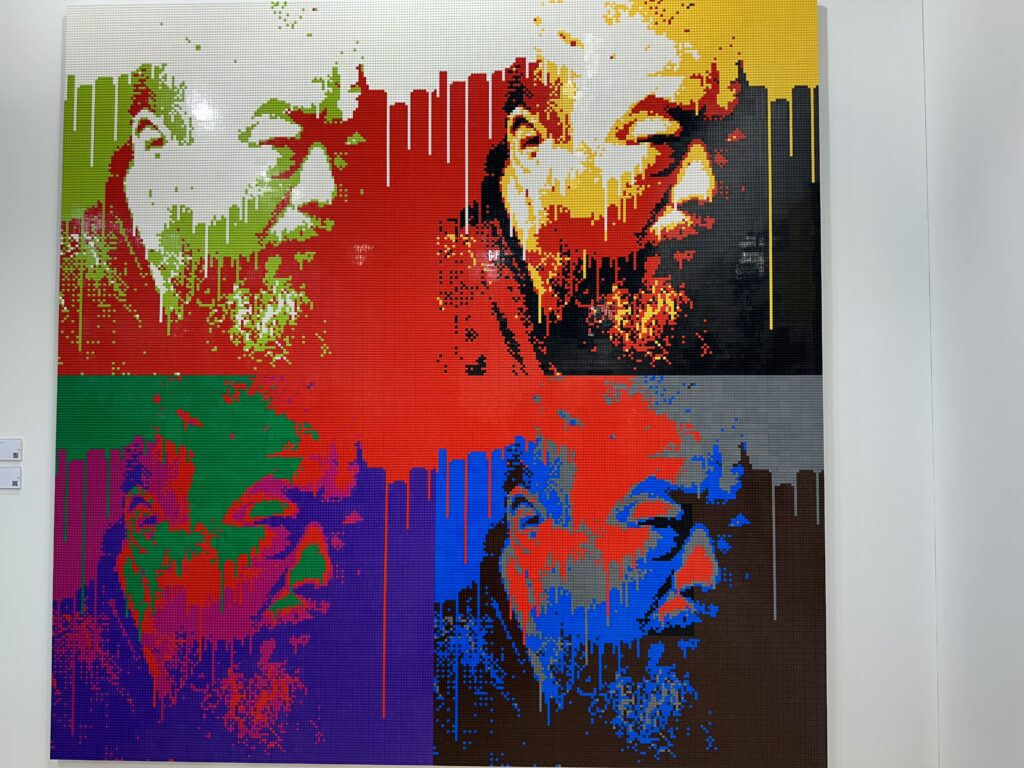
Ai Wei Wei Ai Quadruplex in Dripping, 2022, presented by Neugerriemschneider Gallery (photo private)
The concept of ready-made art, pioneered by Marcel Duchamp in the early 20th century, revolutionized the art world by elevating everyday objects to the status of art. This audacious move challenged conventional notions of artistic creation and authorship, paving the way for future innovations.
Ai Weiwei’s innovative use of Lego bricks in his artwork represents a fascinating evolution of this ready-made tradition. While firmly rooted in Duchamp’s revolutionary approach, Ai’s creations also forge a compelling link to Andy Warhol’s Pop Art masterpieces. The pixelated Lego portraits of political dissidents and cultural figures created by Ai echo Warhol’s iconic silk-screened images of celebrities and consumer products, bridging decades of artistic innovation.
By repurposing these mass-produced, commercially available toys, Ai transforms the mundane into a powerful medium for artistic expression. This approach skillfully blurs the lines between high art and popular culture, inviting viewers to reconsider their preconceptions about what constitutes art.
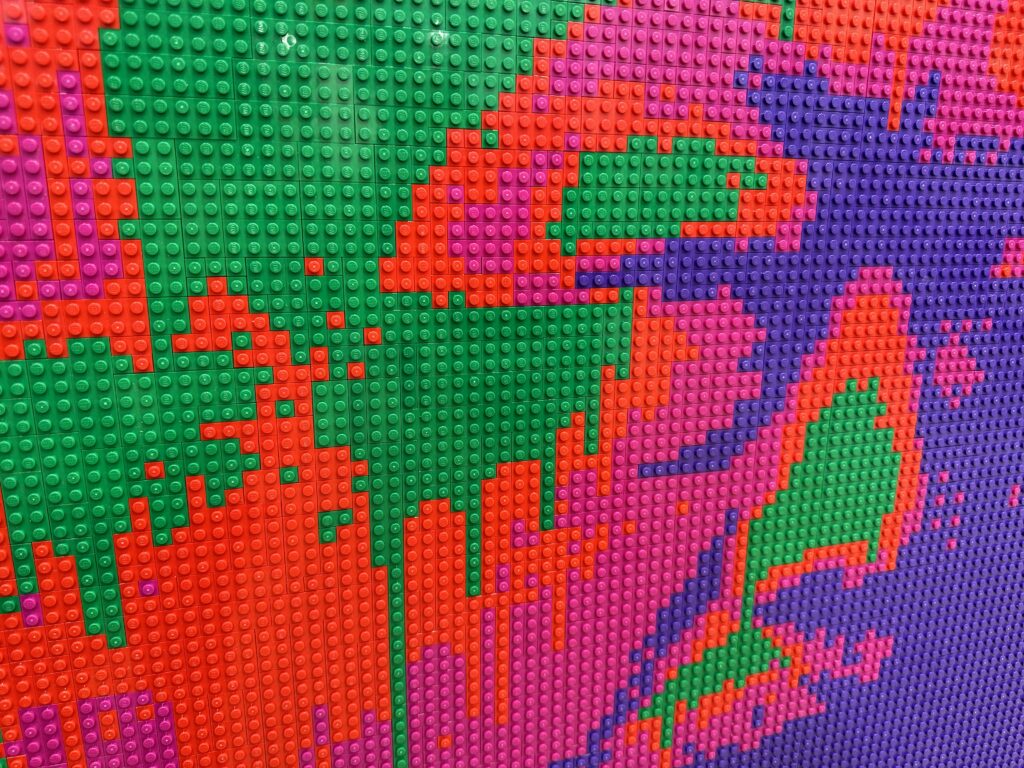
Ai Wei Wei Ai Quadruplex in Dripping, 2022, presented by Neugerriemschneider Gallery (photo private)
The use of Lego bricks, a toy associated with childhood and creativity, contrasts with the serious and often politically charged themes in Ai Wei Wei’s work. The choice of Lego bricks, which can be assembled and disassembled at will, mirrors Ai Wei Wei’s ongoing critique of the construction and deconstruction of cultural identity, heritage, and personal freedoms.
Moreover, the modular nature of Lego bricks, which can be endlessly assembled and disassembled, mirrors Ai’s ongoing critique of the construction and deconstruction of cultural identity, heritage, and personal freedoms.
Ai’s use of Lego gained international attention when the company initially refused to sell bricks directly to him, citing a policy against political use. This controversy itself became integral to the artwork, as Ai crowd-sourced Lego donations from supporters worldwide. The incident highlighted pressing issues of censorship, corporate ethics, and freedom of expression, transforming the art-making process into a global statement of solidarity.
By incorporating these donated Lego bricks into his works, Ai brilliantly transformed an act of censorship into a collaborative artistic endeavor. This approach aligns with conceptual art practices that prioritize idea and process over the final product, further cementing Ai’s position as a thought-provoking and boundary-pushing contemporary artist.
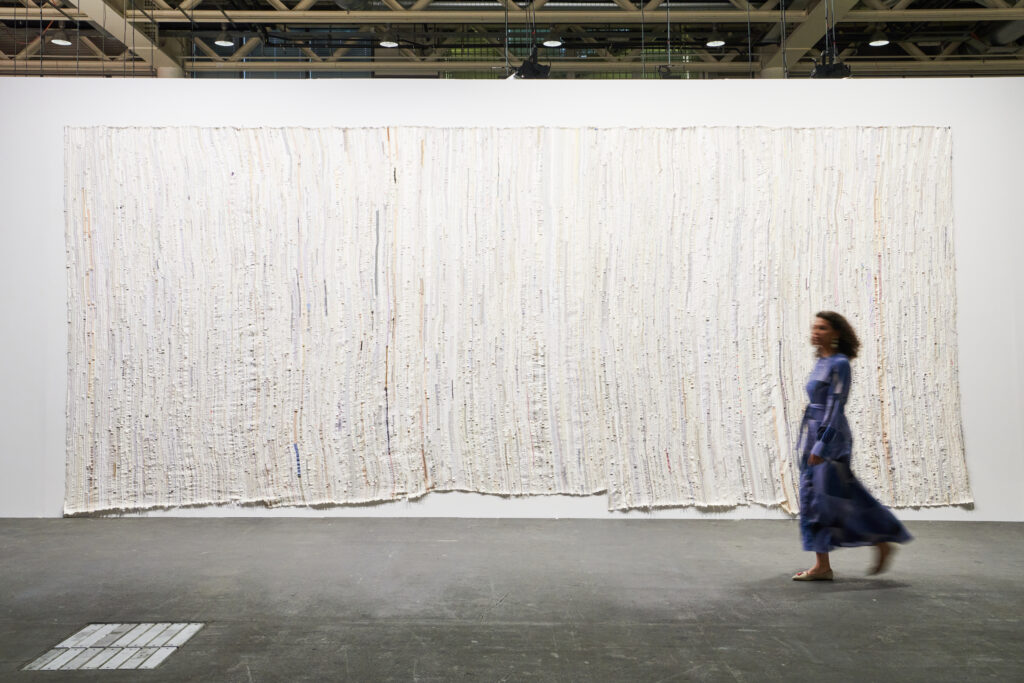
Kresiah Mukwazhi Nyenyedzi nomwe (the Seven Sisters Pleiades), 2024, presented by Blank Projects gallery and Jan Kaps gallery (photo private)
Kresiah Mukwazhi’s latest work, Nyenyedzi nomwe, delves deeper into her ongoing collaboration with sex workers from Harare’s suburbs, exploring the female body as a battleground of power dynamics.
This monumental installation, crafted from salvaged bra straps, tattered lace, fabric, and clasps from discarded lingerie, serves as a poignant repository of personal histories and lived experiences.
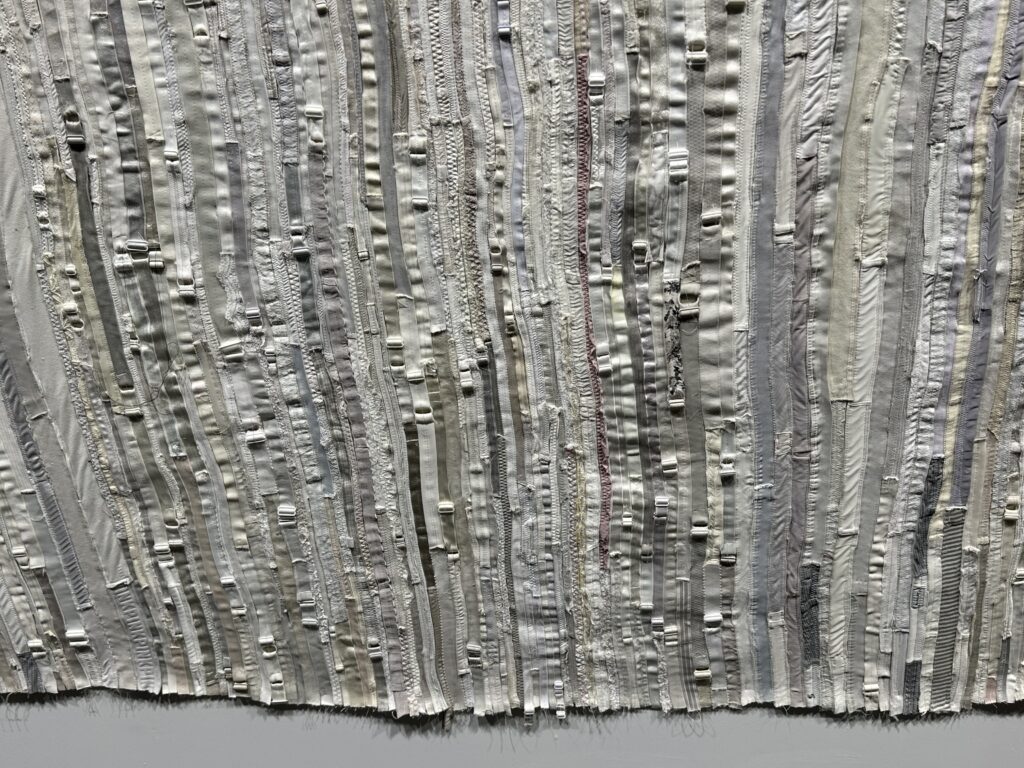
By repurposing these emotionally charged materials, Mukwazhi deftly weaves a narrative that challenges cultural norms and confronts the taboos imposed on women and their bodies. The work becomes a powerful critique of latent patriarchal structures and systemic violence, inviting viewers to confront uncomfortable truths about gender-based discrimination and sexual exploitation in Zimbabwe.
Ready-made art, transcends its utilitarian origins to become a medium of protest and reflection. This piece is not an object to be admired in an ivory tower, detached from the real world. Instead, it is raw, unfiltered confrontation with the violence and discrimination faced by sex workers.
It challenges the viewer to engage with the uncomfortable truths it presents.
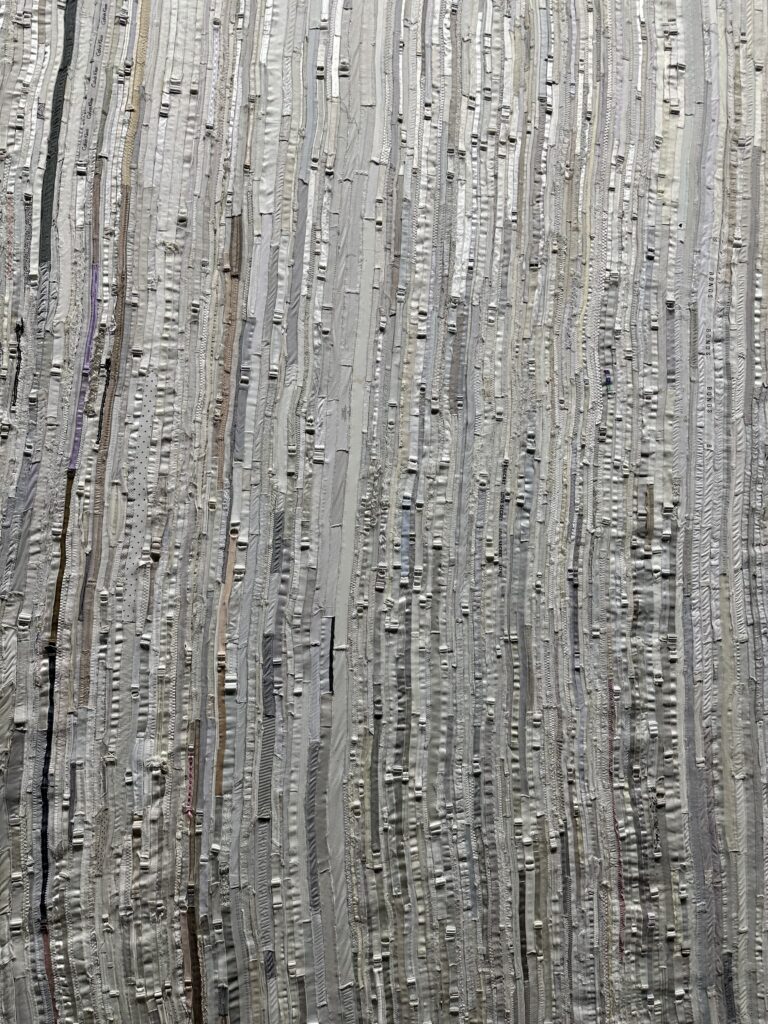
Kresiah Mukwazhi Nyenyedzi nomwe (the Seven Sisters Pleiades), 2024 (photo private)
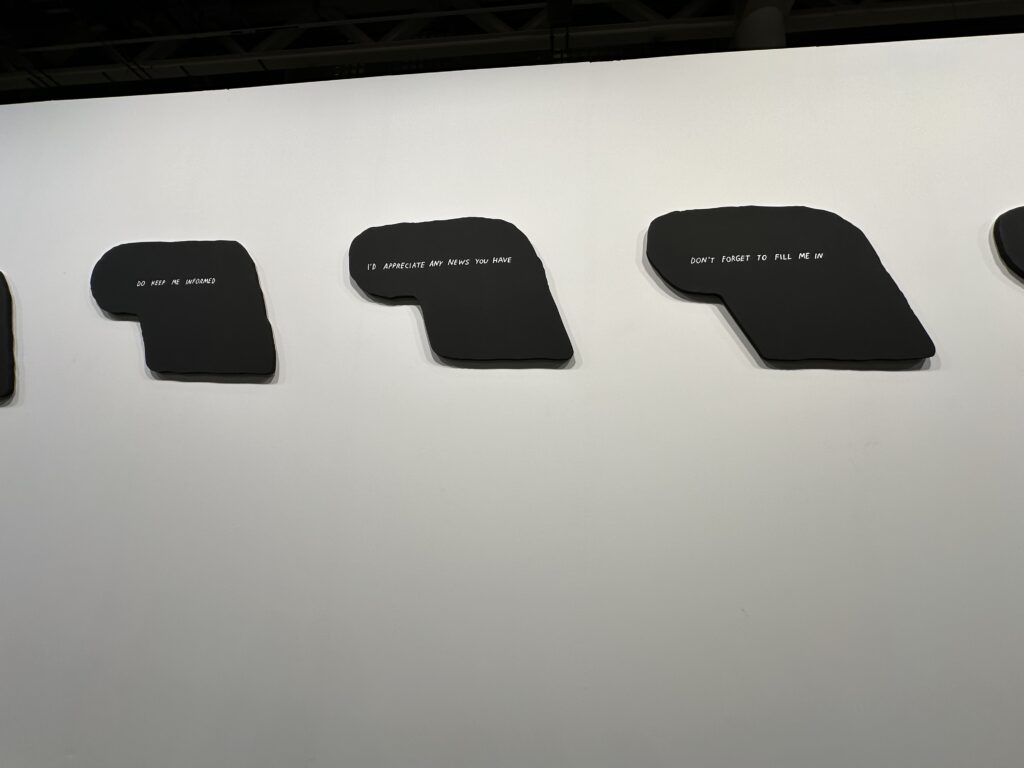
Christine Sun Kim FOMO Scores (2024), presented by White Space (photo private)
For Christine Sun Kim and other deaf or disabled artists, navigating the art systems’s accessibility gaps can pose significant challenges. By overlooking or not considering specific needs like sign language interpretation or captions, institutions, galleries, and event organisers create FOMO, „ fear of missing out.“
Kim’s project FOMO Scores reflects on this sensation.
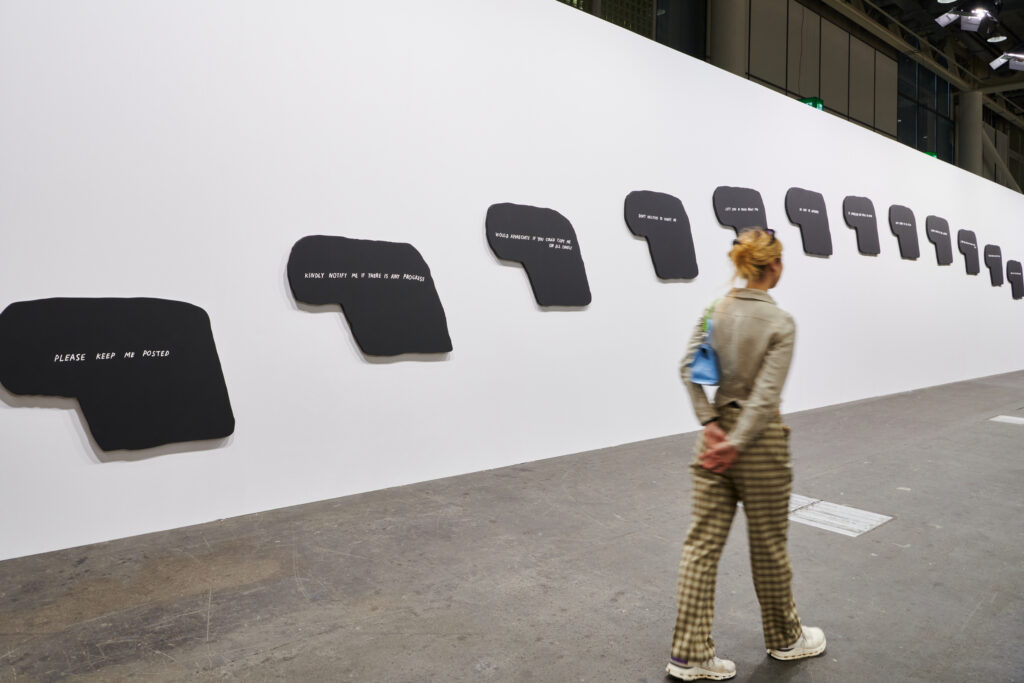
The installation features 15 canvases shaped like the outer contours of the American Sign Language for „score“, each with a written request such as „Please keep me in the loop.“
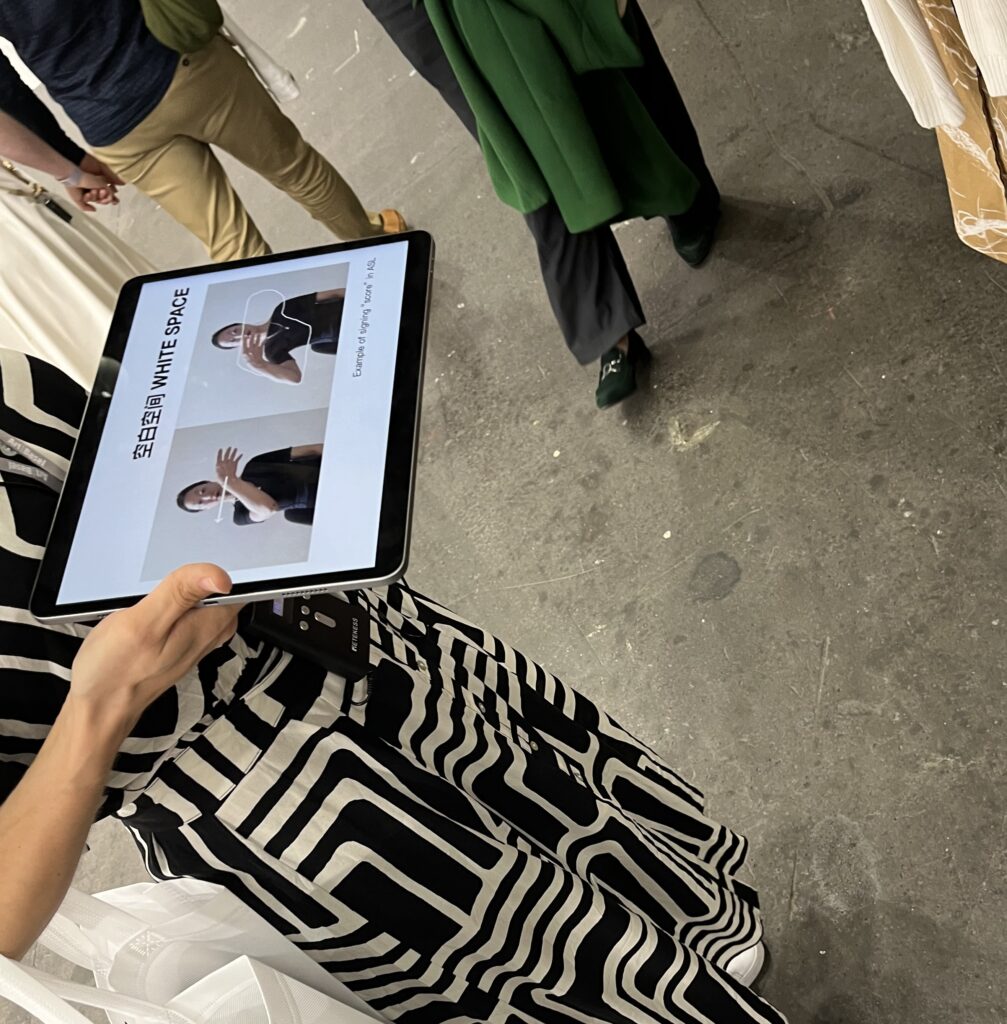
FOMO Scores is not just about the fear of missing out on social events or trends; it delves deeper into the isolation that comes from a lack of inclusivity and understanding.
This artwork invites viewers to reflect on their own perceptions and the societal structures that contribute to the exclusion of those who communicate differently.
FOMO Scores is a poignant reminder that inclusion is not just about physical presence but about genuine, empathetic connection.
The artist’s heartfelt plea for inclusion in communication deeply moves me.
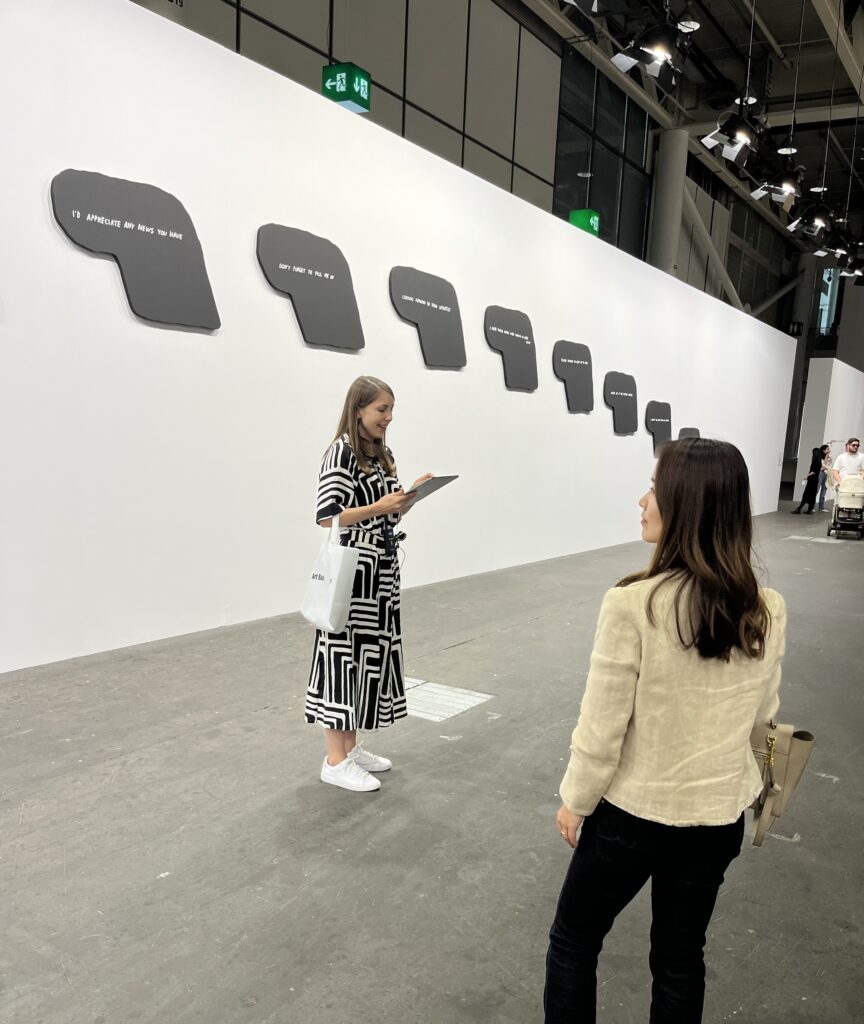
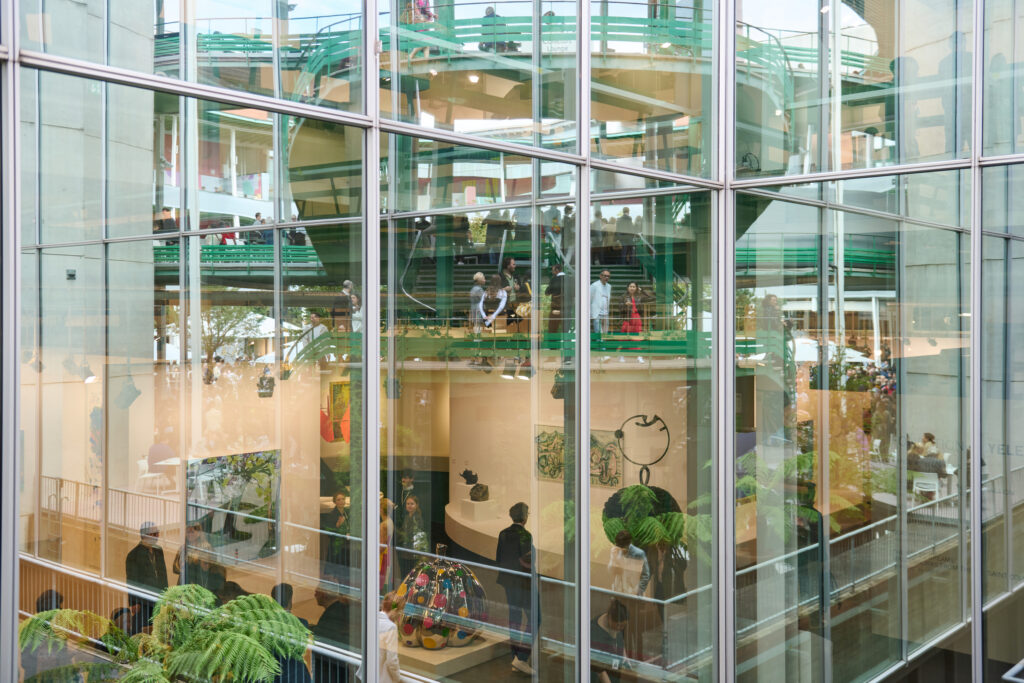
Art Basel’s 2024 edition concluded on Sunday, June 16, capping off a week of robust sales across all market sectors. From emerging talents to blue-chip masterpieces, the fair once again proved its unparalleled ability to connect artists, collectors, and enthusiasts in a celebration of creative vision.
Photos by Marc Lauterfeld and Art Basel